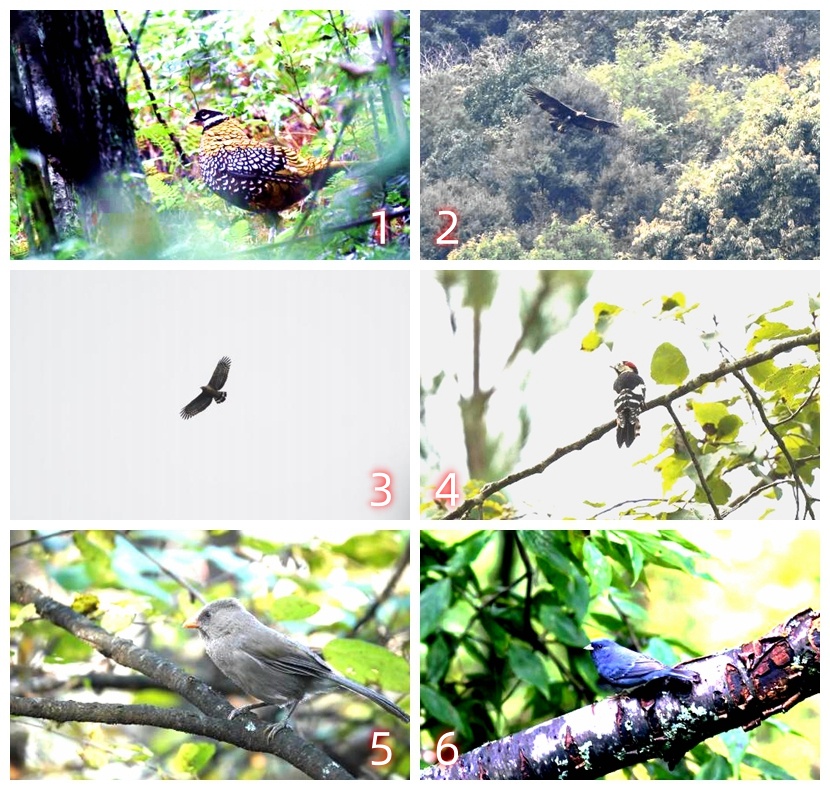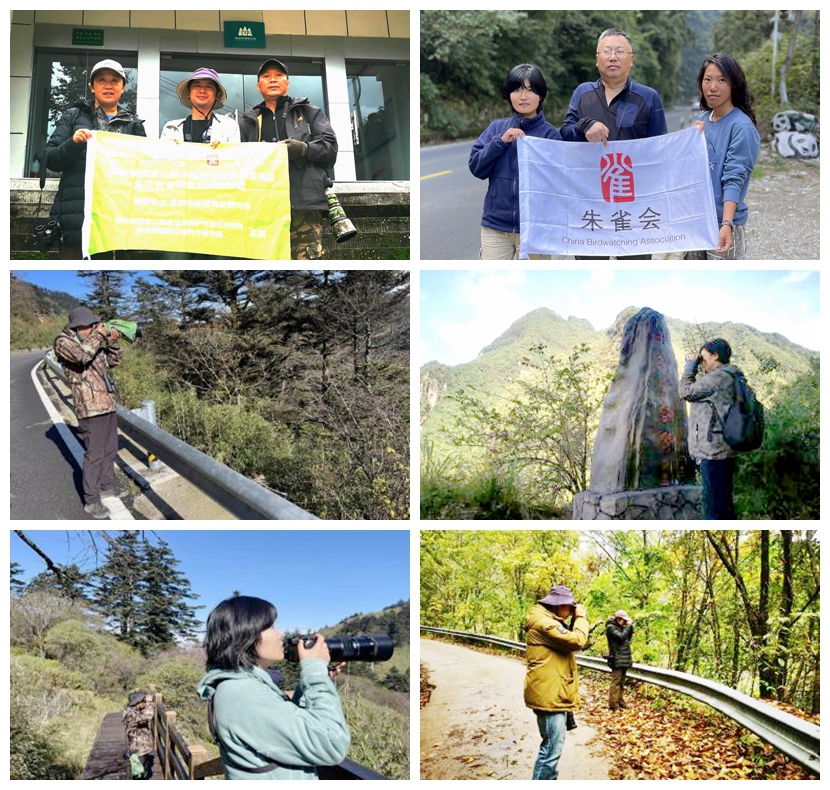Extraordinary Bird Diversity in Shennongjia
Updated:2023-11-01 Source:Shennongjia National Park
In October 2023, in order to comprehend the current situation and development trend of the background resources concerning avian species in Shennongjia National Park, the Kunming Zhuque Ornithological Research Institute sent a survey team to Shennongjia National Park to conduct the fifth systematic field survey of this year, focusing on the investigation on bird species during the autumn migration season. The survey team consists of senior volunteers in relation to bird observation, including Hu Gang, Wei Ming, Lei Jinyu, Wang Lin, Yao Yi, Li Bin, Chen Siqiao, and Chen Yi. Wei Ming and Lei Jinyu led a team respectively to conduct simultaneous surveys. The survey area covered all areas of the candidate Shennongjia National Park, basically ensuring that every grid of 10 square kilometers was covered.
The whole investigation was arduous. Since Shennongjia endured several weeks of incessant autumn rain, the first half of the investigation was mostly conducted in the rain, which greatly affected the observation process. Worse still, it was even tougher for the survey team when the continual rain caused many sections of roads to collapse. There was one spine-chilling moment when the team had a narrow escape from a road collapse that happened directly after the whole team had just passed by. In retrospect, Wei Ming still breaks out in a cold sweat.
“There were also surprises coupled with difficulties,” said Wei Ming. During this round of surveys, a large number of migrating raptors were recorded on those anticipatory migratory paths. Notably, as sprinkles of rain stopped, countless raptors hovered over nearby mountains and then continued to migrate south under the overcast sky. Among them, 3 greater spotted eagles and 1 golden eagle, first-class protected wildlife under the List of State Key Protected Wild Animals, were filmed in the Shibali Changxia National Nature Reserve, a vivid manifestation of how habitable the national park is for migratory raptors. On the return trip, one of the group members was still holding up the camera to take pictures of raptors flying in the sky, at the Xingshan High-speed Railway Station in Yichang City. The team member Hu Gang said excitedly, “We are photographing a group of black kites. We were also very lucky just now to capture a golden eagle with lens as we entered the Xingshan area. It flew low, basically hovering over the forest, and it is a rarity that the photo is super clear.”
 Some photos of birds taken during the survey. From 1 to 6, the Reeves’s pheasant, the golden eagle, the crested serpent eagle, the crimson-breasted woodpecker, the great parrotbill, and the slaty bunting.
Some photos of birds taken during the survey. From 1 to 6, the Reeves’s pheasant, the golden eagle, the crested serpent eagle, the crimson-breasted woodpecker, the great parrotbill, and the slaty bunting.According to Wei Ming and Lei Jinyu, the survey team took more than 1,000 valid pictures of various birds during this survey. Specifically, 3 species of the first-class national protected animals were recorded, namely the Reeves’s pheasant, the golden eagle and the greater spotted eagle; 23 species of the second-class national protected animals, including the koklass pheasant, the oriental honey-buzzard, the grey-faced buzzard, the crested serpent eagle, the crested goshawk, the goshawk, the sparrow hawk, the besra, the northern harrier, the common buzzard, the black kite, the pied harrier, the collared owlet, the golden-breasted tit babbler, the thrush, the Elliot's laughingthrush, the spotted laughingthrush, the three-toed parrotbill, the red-billed leiothrix , the chestnut-flanked white-eye, the Sichuan treecreeper, the Fujian niltava, and the slaty bunting; 3 species listed as Vulnerable (VU) on the IUCN Red list, namely the Reeves’s pheasant, the greater spotted eagle and the black-capped kingfisher; and 2 species listed as Near Threatened (NT), namely the blue-and-white flycatcher and Sichuan treecreeper.
Nonetheless, the survey team did not continue to record those raptors that were still migrating when the main research target had been made, in that the raptor was not the sole observation object in this survey. But the team suggests that the national park could specially set up a project dedicated to the monitoring of migratory raptors in the future.
Speaking of Shennongjia, Wei Ming said with great excitement, “Shennongjia is the Roof of Central China, just like a giant bird’s nest standing high on the top of a big tree. It is an important habitat of migratory birds and many other iconic species of birds inhabiting here. I can’t remember how many times I have been here to take pictures of birds, and there will always be a surprise every time I come.” Wei Ming comes from Yunnan Province, a place with the largest number of bird species in China, since among the 1,500 bird species discovered in this country, there are more than 1,000 species found in Yunnan. Kunming Zhuque Ornithological Research Institute attaches great importance to Shennongjia, in that it is the highest point in central China, as well as the transitional zone between the second and third steps of China’s terrain. In this way, it is of great significance to monitor the trajectory of migratory birds on this strategic spot for the purpose of getting fully aware of the bird resources and their variation tendency in Shennongjia National Park.
The next survey will be conducted in December. By then, with the snowflakes whirling in the sky, the mountains enveloped with white snow and the Dajiuhu wetland frozen, it will be more than a perfect time for bird watching. (By Lei Jinyu, He Sai, and Wang Pin)
 Team members at work.
Team members at work.Copyright Shennongjia National Park
Address:36 Chulin Road, Muyu Town, Shennongjia Forestry District, Hubei Province 鄂ICP备18005077号-3
Address:36 Chulin Road, Muyu Town, Shennongjia Forestry District, Hubei Province 鄂ICP备18005077号-3
Email:2673990569@qq.com
Phone:0719-3453368
Phone:0719-3453368


TOP

